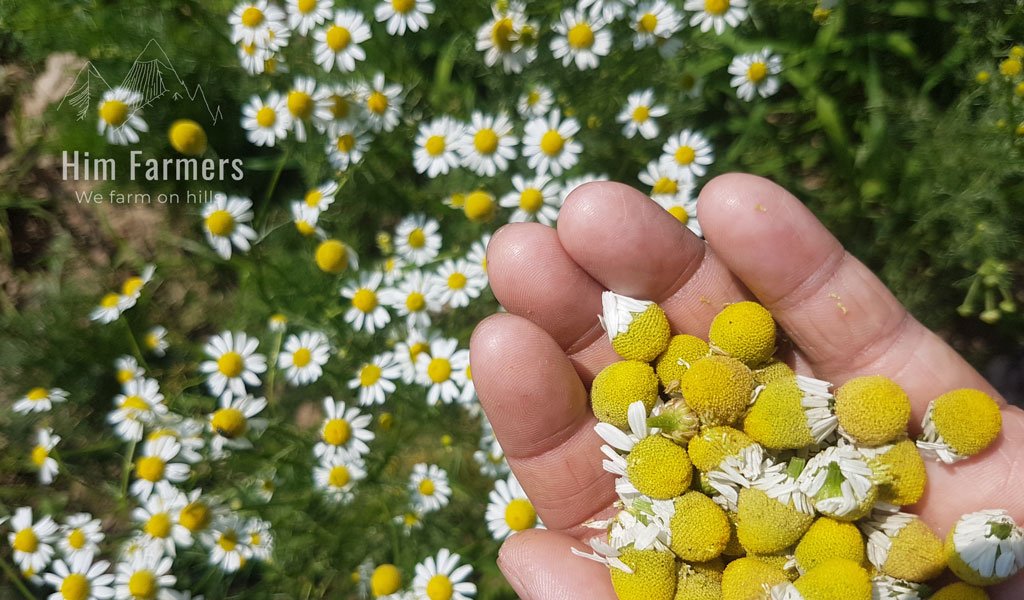Chamomile due to its tremendous benefits has gained a lot of popularity world-wide. Its medicinal properties with a nice taste and apple like fragrance is amazing. Its consumption as a Herbal Tea is becoming very popular.
Himalayas are very-well known for its herbal produce since ancient times.
With this guideline we will be sharing the step by step guide of producing and harvesting chamomile flowers.
I had no earlier experience of growing chamomile other than my knowledge to operate computer and perform google search. I collected all the information required to plant chamomile either at small scale or large scale chamomile productions.
I was lucky to have this bare land of my father to go for this trial. Now, with great confidence I initially bought 40 packets of seeds and did the seed plantation to seed beds. Turned out, nothing popped up, not even a single tiny chamomile seedling. I kept searching for the plants among the weeds which was now populated in all over my seed beds. I didn’t even know how the seedling is going to look like.
Honestly, this was a total failure with a great message learnt. Farming without any practical exposure can’t lead to a good crop even if you are good at google search.
After this message learnt I kept idle for a while, I mean I did not try it again months went passed.
One day, I decided to share this failure to my Father, my father is an experienced farmer who has been into farming for almost 50 years.
He asked couple of questions about my trial and said. You need to learn through experiment, rather than execution. Just get 2 packets of chamomile seeds, not more than that.
I will help you with the process of plantation and to go with cultivation at large scale, further. Despite the fact that he didn’t grow chamomile flowers before, I agreed to him and proceeded as per his instructions.
Turned out, it worked very well and these days we are able to produce chamomile at large scale in tons.
Let me reveal this knowledge in a step by step process, so that you don’t loose your money, time and patience.
We will be sharing the actual practice which we went through. Also, we will be adding the photographs or videos which we captured during its cultivation.
Here we go…
